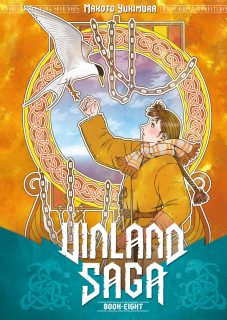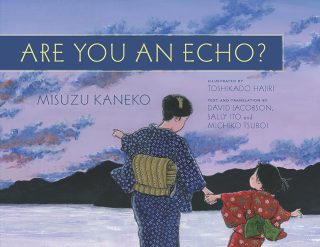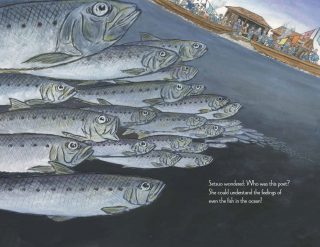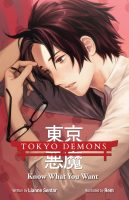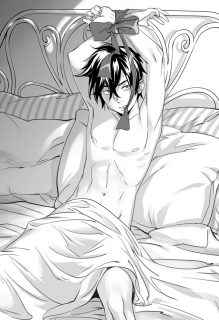 Creator: Jen Lee Quick
Creator: Jen Lee Quick
Publisher: Chromatic Press
ISBN: 9781987988079
Released: July 2016
Original run: 2014-2015
My introduction to the work of Jen Lee Quick was through her comic Off*Beat. The first two volumes of the series were originally published by Tokyopop after which the comic sadly languished unresolved until it was rescued by Chromatic Press, becoming one of the publisher’s flagship titles. After completing Off*Beat with Chromatic Press, Quick began working on a second comic series with the publisher called Gatesmith. The origins of Gatesmith actually date back to Quick’s Tokyopop days as well, but the ideas for comic have significantly changed since then. At least one thing has remained the same though–Gatesmith is a dark fantasy Western drastically different from Off*Beat. Gatesmith began serialization in Chromatic Press’ digital magazine Sparkler Monthly in 2014. The first volume concluded in 2015 and the serialized content was subsequently collected as an ebook along with an exclusive epilogue comic and the short prequel comic “Hungry.” A small print run of Gatesmith, Volume 1 was released in 2016. As a fan of Quick’s work, I was very happy to snag a copy.
Edgeward is a western frontier town undergoing a transformation as its residents slowly build it into a successful mining city. But Edgeward is also the home to numerous strange happenings, phenomena which some people attribute to the area’s large deposits of mythrilite, a promising but potentially dangerous new energy source which hasn’t yet been thoroughly studied. Modernization can carry along with it tremendous risks, but there seems to be something even more primal, ancient, and bizarre at work in Edgeward. On the outskirts of town, strange lights can be seen in the middle of the desert. Peculiar trees spontaneously emerge where no tree has any right growing. Rumors circulate about monsters and creatures of legend roaming about. Ranchers are losing livestock and are uncertain whether or not to blame humans or something much more diabolical. Whatever it is that is going on in Edgeward may very well have a greater meaning and far-reaching impact than anyone realizes.
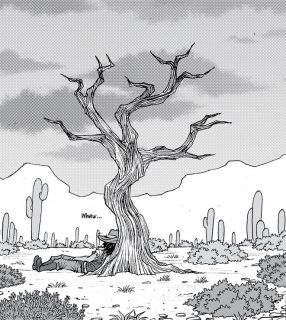 The setting of Gatesmith, while beautiful, is also a harsh and frequently brutal one. Survival is certainly not guaranteed in such an unforgiving environment. The comic opens with an attack on a covered wagon that leaves everyone directly involved in the incident dead and the violence in the story doesn’t end there. At this point virtually everything is unknown in Gatesmith, and the unknown is very apt to get someone killed. Gatesmith, Volume 1 offers very few answers as Quick layers mystery upon mystery. In the series, myth, folklore, and the supernatural are closely intertwined with scientific, social, and technological progress. The anxieties surrounding the changing times are very real and sometimes manifest in unexpected ways. When humans are attempting to deal with things that they don’t completely comprehend or understand trouble naturally follows, but it’s not always the inhuman that people have to worry about–unintentionally or not, civilization can be just as destructive and isn’t necessarily always a positive force. Tremendous resilience and adaptability will be required of any of the characters who hope to reach the end of Gatesmith alive.
The setting of Gatesmith, while beautiful, is also a harsh and frequently brutal one. Survival is certainly not guaranteed in such an unforgiving environment. The comic opens with an attack on a covered wagon that leaves everyone directly involved in the incident dead and the violence in the story doesn’t end there. At this point virtually everything is unknown in Gatesmith, and the unknown is very apt to get someone killed. Gatesmith, Volume 1 offers very few answers as Quick layers mystery upon mystery. In the series, myth, folklore, and the supernatural are closely intertwined with scientific, social, and technological progress. The anxieties surrounding the changing times are very real and sometimes manifest in unexpected ways. When humans are attempting to deal with things that they don’t completely comprehend or understand trouble naturally follows, but it’s not always the inhuman that people have to worry about–unintentionally or not, civilization can be just as destructive and isn’t necessarily always a positive force. Tremendous resilience and adaptability will be required of any of the characters who hope to reach the end of Gatesmith alive.
Gatesmith is off to an incredibly intriguing start with its first volume; I am intensely curious to see how the comic continues to develop from here. However, part of what makes Gatesmith so appealing and engrossing is also what makes the comic somewhat frustrating. Quick is working with several storylines and a marvelously diverse cast of characters, but this early on in the series the connections between them all are not immediately clear. With the many strange occurrences and often stranger characters involved in Gatesmith, the ultimate direction and drive of the story is somewhat obscured at the moment and the worldbuilding hasn’t yet been established in its entirety. What has been revealed so far is enticing and tantalizing, though. Gatesmith is an interesting blend of genres. Quick draws on traditions of Westerns, folklore, horror, and other speculative fiction without relying heavily on preexisting elements or well-worn tropes, combining them together in striking ways. Currently Gatesmith is on a break as Quick concentrates on a few other creative projects, but I hope to see more of the weirdly wonderful and wonderfully weird Western soon.

